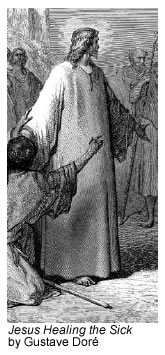by Rev. Terence Groth
 The old saying proposes: “One picture is worth a thousand words.” True enough. At the same time, some words of Scripture are so rich that it may take a thousand “pictures” to display their richness and depth.
The old saying proposes: “One picture is worth a thousand words.” True enough. At the same time, some words of Scripture are so rich that it may take a thousand “pictures” to display their richness and depth.
The word Gospel, the shorthand term for Scripture’s teaching of what God has done in Christ Jesus to forgive sinners and give them eternal life, is the premier example. The biblical writers use multiple pictures to communicate this centralmessage brought to light by the Reformation. So, what does the Gospel look like? Let’s see.
One of St. Paul’s (and Martin Luther’s) favorite descriptions of the Gospel is the picture of justification. This picture uses the language of the courtroom.
In this scene, who is the judge? (Eccl. 12:14; 1 Peter 1:17
_________________________________
_________________________________
Who is the defendant? (Acts 17:31; Heb.12:23b)
_________________________________
_________________________________
What is the accusation? (Rom. 3:10– 18, 23; James 2:10)
_________________________________
_________________________________
What unexpected sentence does God pronounce? (Micah 7:18; Rom. 8:1; 2 Cor. 5:19)
_________________________________
_________________________________
This proclaims our reality in Christ. We guilty sinners actually have been pronounced “not guilty” before God, our Judge, because Christ took the punishment we deserve!
Another prominent description of the Gospel uses the language of business. This is the picture of redemption. In our commercial world, it’s one we can apply readily.
In this picture, who owns believers? (Eph. 1:14; 1 Peter 2:9)
_________________________________
_________________________________
What has God paid for us? (Matt. 20:28; Acts 20:28b; 1 Peter 1:18–19)
_________________________________
_________________________________
The issue of the Christian’s worth is settled once and for all in the price God paid to own each of us—the precious life and death of His beloved Son.
The prevalence of addictions to drugs, alcohol, sex, gambling, etc., testifies that slavery to sin is not a pretty picture. Thus, the good news described as salvation, or rescue, is a powerful message.
When sinners are set free from sin, death, and the devil, how do they use their freedom? (Rom. 6:18, 22; Gal. 5:13; Eph. 6:6; 1 Peter 2:16)
_________________________________
_________________________________
Now here is an inspiring picture— former slaves of sin and the devil freely serving Christ and their neighbor because Christ has set them free through forgiveness and the power of His Spirit. Free indeed!
Yet one more Gospel metaphor, using the language of healing, depicts salvation as health, or wholeness. This, too, is a picture that may speak powerfully to contemporary culture.
How is the condition of sin diagnosed in the following passages? (Ps. 38:3; Is. 1:5–6; Jer. 8:22; 2 Cor. 4:4; Eph. 2:1)
_________________________________
_________________________________
Literally, what healing did Jesus bring in these accounts as signs of His new creation? (Matt. 4:23–24; 9:27–33; Mark 3:1–5; Luke 4:38–39; John 11:38–44)
_________________________________
_________________________________
How is Jesus’ saving work described in these passages? (Is. 53:3–5; Luke 5:31–32; John 6:48–51)
_________________________________
_________________________________
How does Revelation depict the wholeness of Jesus’ new creation? (2:7b, 11b; 7:16–17; 21:4; 22:2–3)
_________________________________
_________________________________
Perhaps the shortest way of depicting the Gospel is “Jesus heals!”
John concluded his story of Jesus by saying: “Jesus did many other things as well. If every one of them were written down, I suppose that even the whole world would not have room for the books that would be written” (21:25 NIV). Likewise, I suppose if all possible pictures were painted to unravel the meaning of the Gospel, no gallery or poetry library could hold them. But here’s a good start—and a good way to celebrate the Reformation! Can you picture that?


